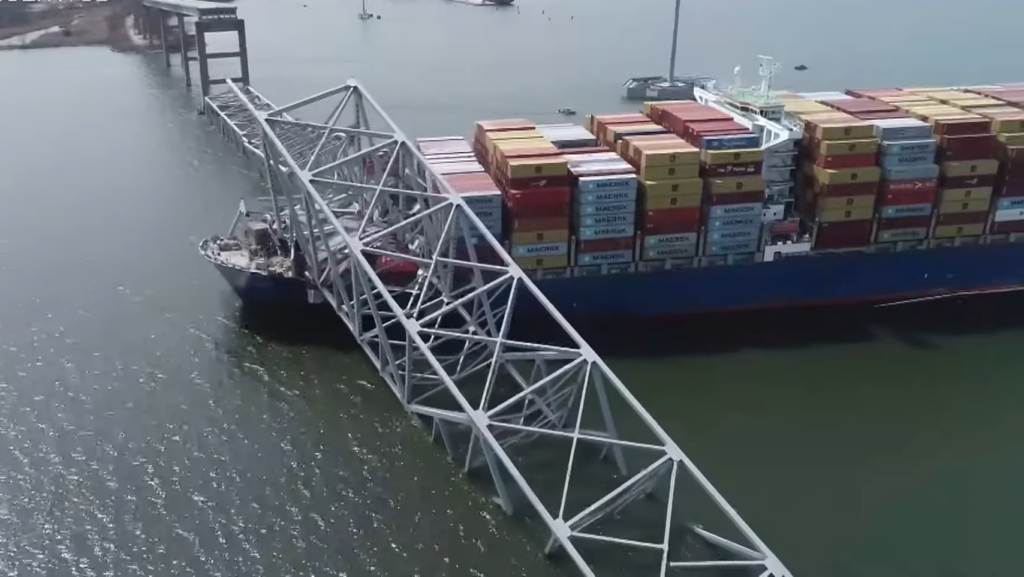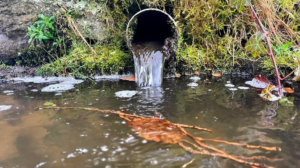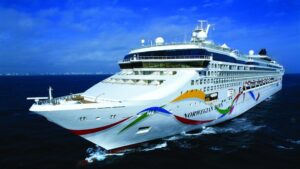Baltimore bridge likely to be biggest ever marine loss
 Image courtesy of National Transportation Safety Board.
Image courtesy of National Transportation Safety Board.
Insurance payouts for the collapse of Baltimore’s Francis Scott Key Bridge, which collapsed on Tuesday (26 March 2024), may be the largest in history, according to Lloyd’s of London chief executive John Neal.
“This has the potential to be one of the largest marine losses in history,” Neal tells Bloomberg News. “It’s a multi-billion dollar loss. I think it has to be but I think it is a little too early to say what you actually think it’s going to cost.”
The four-lane bridge collapsed in the early hours of Tuesday, after the Singapore-flagged ship, Dali, lost power and hit a column, causing huge spans of the 2.57 km bridge to collapse moments afterwards. The bodies of two men trapped in their pickup truck by the disaster have been recovered from the water. They have been identified as Alejandro Hernandez Fuentes, 35, and Dorlian Ronial Castillo Cabrera, 26.
Four other construction workers remain missing and are presumed dead. Divers are searching for more bodies in treacherous conditions. Sonar images show additional submerged vehicles “encased” in sunken bridge debris.
The collapse has triggered chaos at one of the most important ports on the US East Coast. Baltimore is the busiest US port for car shipments, with around 750,000 vehicles shipped in 2022, according to the Maryland Port Administration. The port handles more automobile and farm equipment freight than any other in the US. It also handles freight, including sugar, coal and gypsum.
Barclays Plc analysts estimated that insurers face claims of as much as $3bn, with claims for the bridge alone potentially reaching $1.2bn, according to Bloomberg. Barclays analysts predict further liabilities for $350m to $700m for wrongful deaths and yet-to-be-determined amounts for business interruptions while access to the port is blocked.
CCTV footage and marine tracking data shows the Dali repeatedly lost power and propulsion for around 60 seconds, while adjusting its course and emitting smoke before it hit the Baltimore bridge.
Audio from the ship’s ‘black box’ data recorder, recovered on Wednesday (27 March 2024), shows that the freighter pilot had called for tugboat help and reported a power loss minutes before ploughing into the bridge. The crew dropped anchor, likely in an attempt to slow the vessel, after the power loss.
Baltimore Bridge is 1.6 miles long,
— Science girl (@gunsnrosesgirl3) March 26, 2024
this is the moment it collapsed after a cargo ship struck it in the early hours of this morning
pic.twitter.com/eA6womQlcI
The head of the National Transportation Safety Board (NTSB) has told media that the bridge — built in 1976 — was more vulnerable to a catastrophic collapse as it lacked structural engineering redundancies common to newer spans.
On Wednesday, an NTSB team boarded the freighter, which is now anchored in the harbour channel. The team is conducting interviews with the ship’s two pilots and 21 crew, who have all remained on the vessel.
Video footage from the disaster shows the ship’s lights blinking on and off in the moments before the collision. Safety board chief Jennifer Homendy says recorder data was “consistent with a power outage”, but this has yet to be confirmed.
Open source recordings of emergency radio chatter during the collision reveal that police were able to hold traffic onto the bridge shortly before the impact, undoubtedly saving lives.
At a White House briefing, Vice Admiral Peter Gautier said the US Coast Guard is aiming to first restore the waterway for shipping, before stabilising and removing the damaged vessel.
Meanwhile, footage has emerged of another accident involving Dali, dating back to 2016, when the vessel was involved in a collision departing the port of Antwerp in Belgium. The incident was reportedly blamed on the ship’s master and pilot on board.











The vessel can be seen veering sharply to starboard before impact. I wondered how, but having just read this piece, I wonder if it was because the starboard anchor was dropped? Was it the starboard anchor?